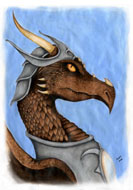
Karien Naude taught herself to draw, paint and airbrush.
Her native language is the Afrikaans of the Dutch Protestants who settled in southwestern South Africa in the 17th century.
“The wildlife and nature are breathtaking and I love to go camping and take all this splendor in,” she wrote me in an e-mail back in September.
“It’s good for the soul! There are so many different cultures and the people are fantastic. The only thing is we are behind in everything. South Africa is still viewing art as a hobby. But it is changing. There are a lot of different animation programs now available. I’m part of a South African comics group Comicworx Studios, where we try to get the country involved with comics. It’ s very hard work, but every year we can see some progress.
“We have become friends with a few Marvel (Comics) artists and that has given us a huge boost. But my passion is still illustration.”
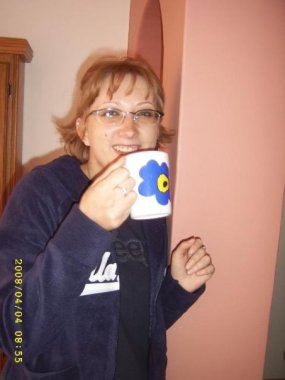
Fantasy artist Karen Naude of Johannesburg
She has far too many interests to mention in this small space. But I will say they include the fairies, trolls and wizards of the novels of Terry Pratchett and J.R.R. Tolkien (who also was born in South Africa, but moved to England when he was three.)
She also reads Anne Rice and Stephen King, Dean Koontz and J.K.Rowling.
She likes horror movies, Tim Burton movies and Harry Potter movies.
She’s crazy about music. Her tastes range from Counting Crows to Jimi Hendrix to the operas of Richard Wagner.
To the Screeching Weasels.
She answered an online survey question back in the fall and landed in this online course on how to illustrate a children’s book. Originally spurred by a publisher’s contest, she’s been crafting a picture book based on a Zulu folk tale about a supernatural creature, the Tokoloshe. 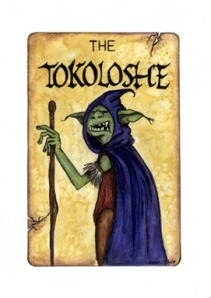
She’s completed the manuscript and has revised her thumbnail storyboard. She’s now at the stage of transferring drawings to her watercolor paper. Dismayed by the retail prices of lightboxes in the art supply stores, she built her own.
I’ll stop here, because Karien does a great job of speaking for herself — in her second language, English.
Karien, what sort of art study have you done?
I’m a self-taught artist with God given talents, and proud of it. Ever since I can remember I have been drawing. Since kindergarten I’ve made the cutest drawings in my school books and always gotten a golden star from the teachers and I think that was when I realized I wanted to become an artist. When I got older I started studying every book I could find about Renaissance artists and bought every art book that showed techniques on how to draw and paint. I started out with pencil drawings and got pretty good in it, later I started experimenting with pastels and paints. I sold a few drawings and got praised by an Art Gallery in Melville but decided that it’s not for me and that I would rather do fantasy drawings and illustration work. I have had no formal training or studies.
Can you describe a little about your life in South Africa? Have you ever lived anywhere else? What is school and work like there?
I have been living in South Africa all my life and have not lived anywhere else. I am planning to visit a friend, hopefully this year, in England, but I will always return to my roots. South Africa is a beautiful country, the land and people. I am currently living in a middle class suburban area and the schools in my area are very respectable and up to standard. I am currently working in the central of Johannesburg town. I work for a big law firm and we mainly work with properties. South Africa has 11 official languages and the most difficult system when selling and buying houses. It is stressful and hard work, and because it’s hard to speak all of the languages, we use English to communicate. So Afrikaans people talk, read and use English, although we are very proud of our language. Afrikaans music is big here and even English people listen to it.
Are there any art museums around?
Yes there are two art museums that I know of in Pretoria and Cape Town but sadly non in Johannesburg where I live. There are however thousand of art galleries that you can visit. The well known Goodman Gallery is also in Rosebank, Johannesburg, and sometimes a real treat to visit as they have a variety of art exhibitions.
What other artistic and/or literary interests do you have? (I know you really keep up with all kinds of music!)
I’m very passionate about air brushing and some have even told me I am very good. I love reading (thanks to my mom) and got my own little library of books that I’ve bought over the years, mostly fiction.
Yes, music plays a big role in my life. I play the piano and I’m always listening to all kind of music on my MP3. You will always find me with my earphones on, on my way to work, and I can never draw or paint without music. It inspires me and I get most of my ideas while listening to it.
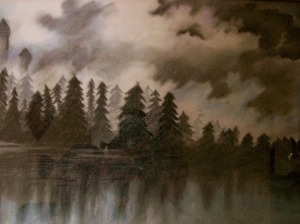
What has brought you to the world of children’s stories and books?
When I go out I love to stop at the nearest book shops and flipping through children books or any book about illustrations. A few years back I started reading Terry Pratchet’s books about Discworld and always admired the art work on the book covers. Paul Stewart and Chris Riddell books and illustration work always brings a giggle to me. One day on my way to work I started thinking of how much I enjoyed the books and illustration work and that I can do it as well. I started doing research on Children’s books which brought me to your course, Make Your Splashes; Make your Marks!
Your interest in fairies, trolls and elves — how far back in your life does that go? What do you think pulls you to them?
It started with The Hobbit when I was in school and later the Lord of the Rings because the elves where mystical, the hobbits lovable and wizard’s warriors. I also love Terry Pratchett’s books where you read about trolls, witches, wizards and all kinds of fantasy beings (with a twist). I will always have a soft spot for them.
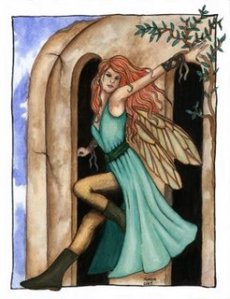 What are you working on now in your illustration?
What are you working on now in your illustration?
I’ve just finished my Green fairy but I want to do a humorous illustration about my children (dogs) and what they do at home when I’m at work.
How is it going, developing the Tokoloshe story? You’ve been developing your thumbnail storyboard. Have you run into any roadblocks?
The Tokoloshe is my first story that I’ve written and I guess that’s my first roadblock! But every step I take and roadblock I get I learn a lot. The thumbnail storyboard helps a lot and after my first one (which I wasn’t happy with) I noticed that I was repeating scenes and so I’ve changed it.
I started a second storyboard but a bit bigger and it works like a dream. I can see how my book’s layout would be and if I repeat scenes or if a scene doesn’t fit. I won’t work without it.
Are you starting to develop any of the full drawings? What difficulties are you finding in this process of working a thumbnail “scribble sketch” up to a complete detailed drawing?
I must say its hard work and long hours. Without the thumbnail and little scribble sketches it would’ve taken me a lifetime to complete but working with the thumbnail it’s much easier and faster. I’ve noticed that my scribble sketches are really working for me and it’s basically just putting it over and improving the sketch into a detailed drawing. But it can also bee frustrating to do the detailed drawing as they sometimes takes to long.
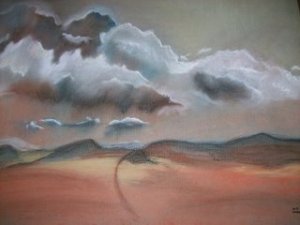
Can you describe how you work? What is your creative process like?
First I must put my earphones on for some music. hehe. I first start with the layout of the drawing in H2 pencil and it involves lot of cappuccino and erasing. When I’m done I always ask my sister to have a look at my drawing and comment on it (she is like my personal editor) and then I start going over it with Faber Castell Ecco Pigment marker and erasing the pencil. I will then start painting and when Im done and happy with it I will go over some lines again with the Faber Castell Ecco Pigment marker for more effect.
How did you pull off that cool cover for The Tokoloshe?
When I was writing the story I wanted to look at a picture of the tokoloshe so that it would not slip from my mind and I created the picture. After doing it I decided to make it into a cover just for the fun of it. I was experimenting with paints and colors and I was happy at the time. Now I see mistakes that I didn’t notice before and the Tokoloshe looks very stiff so I’m planning on giving him a make-over.
What challenges do you find yourself repeatedly facing in your paintings or renderings?
Sometimes my pencil drawings are really good but after starting painting them they don’t turn out as what I was hoping for and they don’t look good to me. When I render a piece I sometime mess it up and after spending so much time on the painting I spoiled everything and I have to through it away and start again which is upsetting.
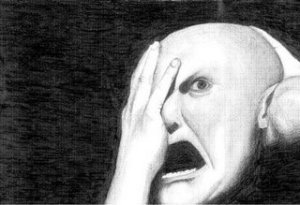
What questions do you have about the whole endeavor of children’s book illustration?
When my story and illustrations are done how will I know what publisher to choose and how do I submit it? How will I know if my work is even good enough? If my work is submitted what is the time frame? If it is accepted, what must I look out for in the contract (pitfalls)?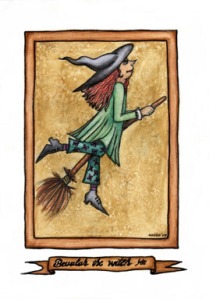
What children’s book publishing opportunities have you uncovered in South Africa or the Afrikaans language?
I’ve read a lot of Afrikaans and English books and I’ve jotted down a few South African publishing companies. There are some famous ones like Random House and Penguin Books, which have branches in South Africa which I’m looking at as well.
Who are your artist muses? Any favorite children’s authors?
People who inspire me are John Howe, Alan Lee, Paul Kidby, Josh Kirby, Paul Stewart, Chris Riddell, Terry Pratchet, J.K .Rowling, Tolkien and Don Seegmiller.
Karien’s art blog, which is on our blogroll , is: http://kariennaude.blogspot.com
We’ll check in with her from time to time to see how she’s progressing on her dummy for “The Tokoloshe.”
Mark Mitchell, who interviewed Karien, hosts the “How Be a Children’s Book Illustrator” blog.
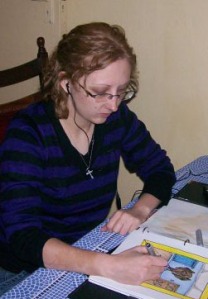
Karien likes to listens to music while she draws.






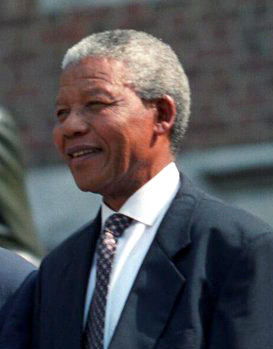 Twenty-two years ago, on the 11th of February 1990, Nelson Mandela walked out of a South African prison, a free man for the first time in twenty-seven years. He immediately assumed the leadership role that would move South Africa from a system of apartheid to a struggling but viable democracy. No one person, not even Nelson Mandela, was solely responsible for this miracle. But no one can doubt the crucial role that he played in the process that brought a new era to South Africa, or that his intellect, sturdy leadership, and political savvy made this process far more peaceful than anyone had predicted would be the case.
Twenty-two years ago, on the 11th of February 1990, Nelson Mandela walked out of a South African prison, a free man for the first time in twenty-seven years. He immediately assumed the leadership role that would move South Africa from a system of apartheid to a struggling but viable democracy. No one person, not even Nelson Mandela, was solely responsible for this miracle. But no one can doubt the crucial role that he played in the process that brought a new era to South Africa, or that his intellect, sturdy leadership, and political savvy made this process far more peaceful than anyone had predicted would be the case.


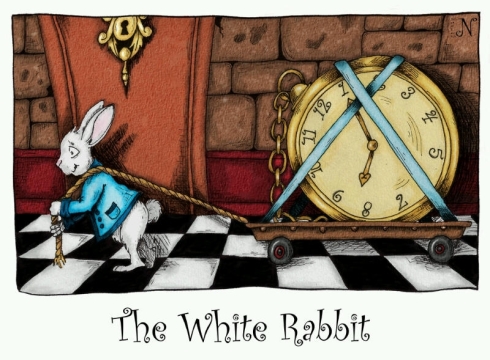
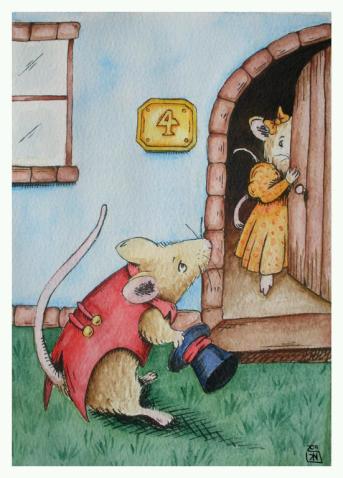










Karien, I love hearing stories like this. Your hard work and determination are helping you to realize your dreams! You’re story is inspiring!
It’s also wonderful to see how your work has progressed. I remember discussing your pigeon during one of our critique nights.